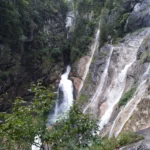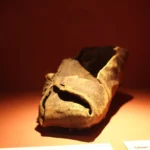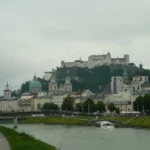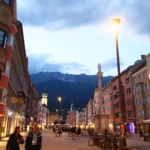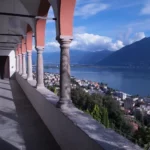Last Updated on 01/08/2023
Salt was mined here already in the 5th millennium BC. The wealth of the local population was based on salt, which traded with both the Baltic and the Mediterranean countries. An entire cultural era has been named for this small Hallstatt old town.
For me, the charm of Hallstatt is a combination of antiquity, beauty and the feeling of isolation from the whole world that arises there. However you can feel that, only if you accomodate in the town or come in the unpopular season. The region is worth a stopover for a at least few days (better 1 week). One-day exursion might be only disappointment – too short and soooo many people.
Next – salt mines, Hallstatt museum
Around the lake (Ostuferweg) and Echerntal.
Map of attractions Dachstein, Tennengau, Pongau
Map of attractions Salzkammergut
the neighboring Dachstein plateau and several caves here.
About Lake Gosau
Bad Aussee Lakeside. Lake Grundlsee, Lake Toplitz, Lake Altaussee
Traunsee Gmunden
Salzburg old town
Salzburg Hellbrunn palace, museums
This is how you would have seen the embankment 10 years ago.
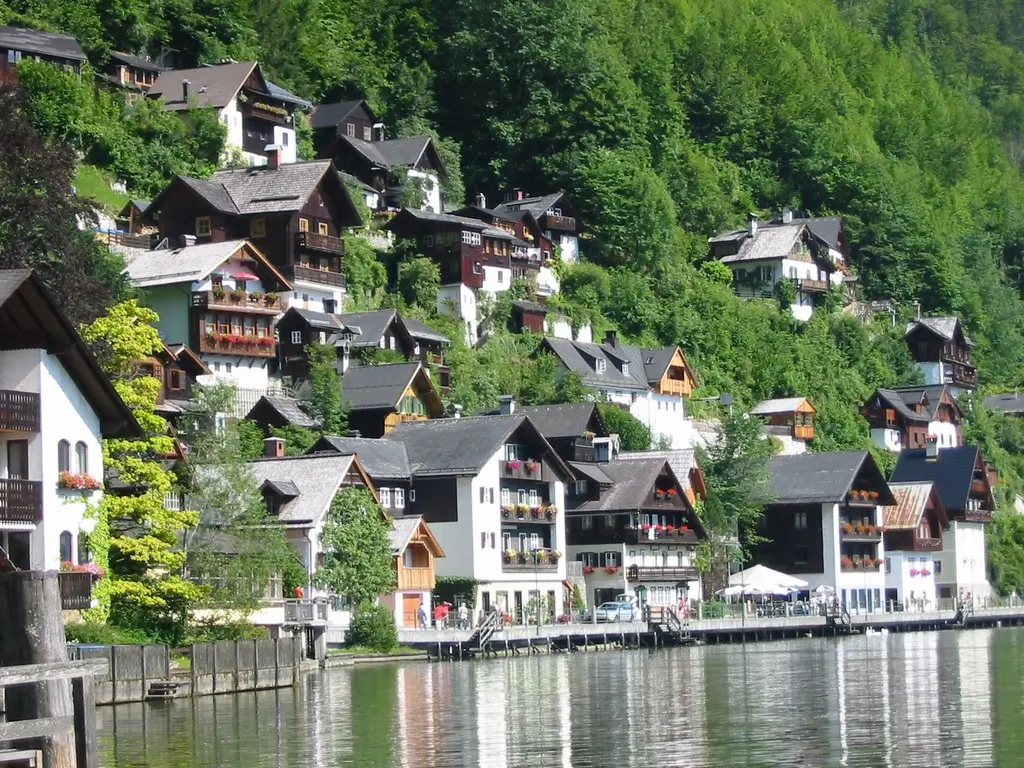
Now you are walking along the embankment, pushing with a bunch of people, all of it is occupied by gift stands, and on many houses there are announcements begging to respect privacy and not to drone. Thanks to Instagram, which spoils any unique place to mass production. For 10 years the situation has become just a dead end and requires some kind of regulation. They say that buses with groups run only for two hours.I would say that it is time to severely limit the number of buses per day.
For me, when a hole is dug in a cemetery (for shifting bones or for a new burial), and about thirty tourists crowd around, trying to take pictures in all directions, this already crosses all boundaries.
But let’s get back to the fairy tale, which you have every chance to see if you build the route and time correctly. Look also at other topics in the region.
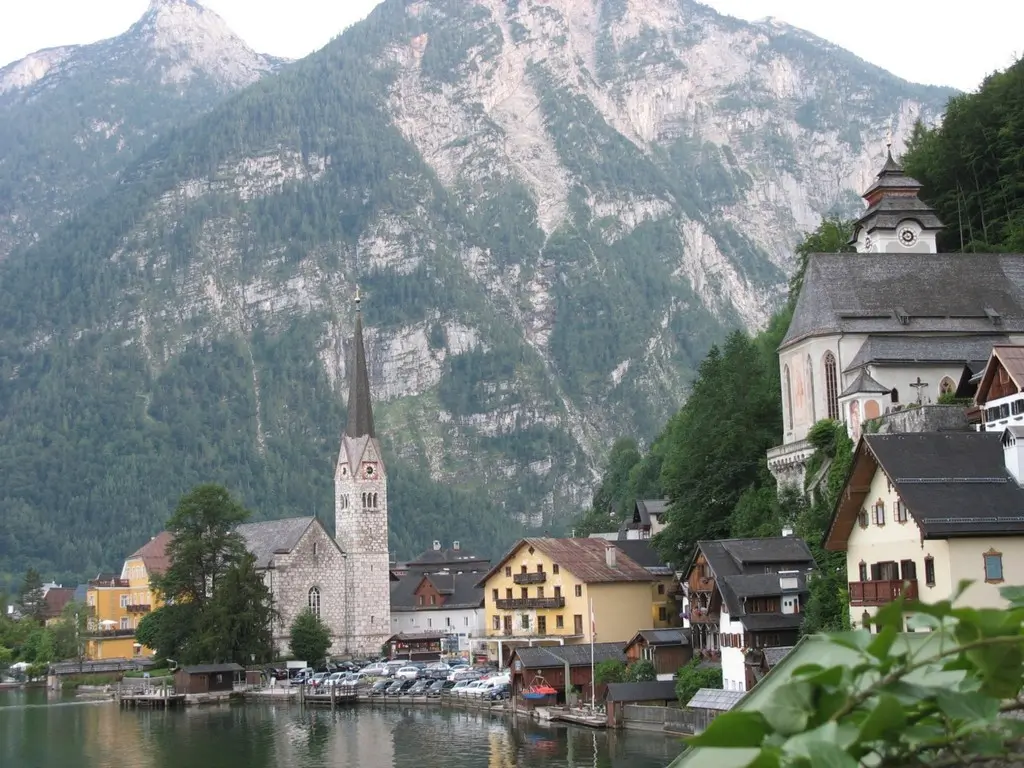
Hallstatt How to get there
Let’s divide the road into two stages: Salzburg – Bad Ischl, Bad Ischl – Hallstatt
1. From Salzburg
Bus 150 Salzburg – Bad Ischl departs from the main station (it stops also at Mirabell) and passes along a scenic road past the Salzkammergut lakes Fuschl and Wolfgang.
The second option: to get there by train Salzburg – Hallstatt / station with a change in Attnang-Puchheim. But this road is longer and more expensive, as it bypasses the Salzkammergut lakes.
On the railway section between Attnang and Hallstatt, there is a 30% discount upon presentation of the Salzkammergut card.
Bad Ischl – Hallstatt
- Train Bad Ischl to Hallstatt station + ferry to the city. This is a scenic way which, however, depends on the ferry and therefore not always possible.
If the ferry does not work, it is possible to take the train to Obertraun and from there by bus. - Bad Ischl – Hallstatt by bus. It’s longer and less picturesque.
By car
There are two small car parks in the city. You will find places on them either very early in the morning, or after 17 hours, or purely by chance. They usually don’t let you wait. Other parking lots are located along the lake and it is not close to walk from them. Therefore, in the season, I advise you once again to think about housing in the town or in nearby towns and about visiting Hallstatt at an unpopular time.
Hallstatt old town
Hallstatt is an absolutely amazing town on the edge of the earth between the mountain and the Hallstatt lake. The entire region is protected by UNESCO as a unique cultural heritage.
It may not be the smallest town in the world (population 947), but it is close to it.
In the historical part there are only two streets and only one is also for cars. The houses of the second line stand at the level of the roofs of the first line, and residents of the first line can enter directly to the second floor. Everything is subject to space saving.

And even the remains of residents were dug up 10 years after burial, inscribed and piled up in the ossuary.
The relatively new part of the town (Lahn) is also small. You can walk all of it in 30 minutes maximum.
Excavations are underway on the territory of the town. Lovers of archeology can see a small (but interesting) part of the excavated in the local museum. The main part was sent to major museums in Austria.
History of Hallstatt, illustrated with photos from Museum Hallstatt.
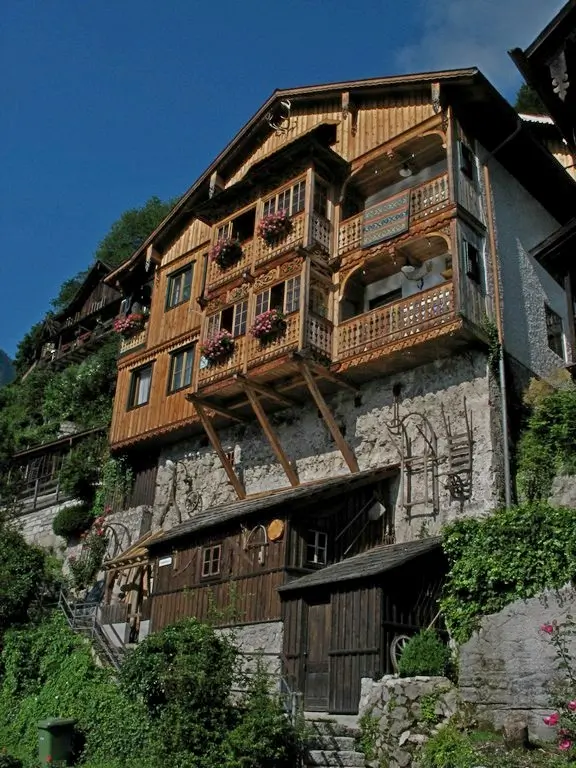
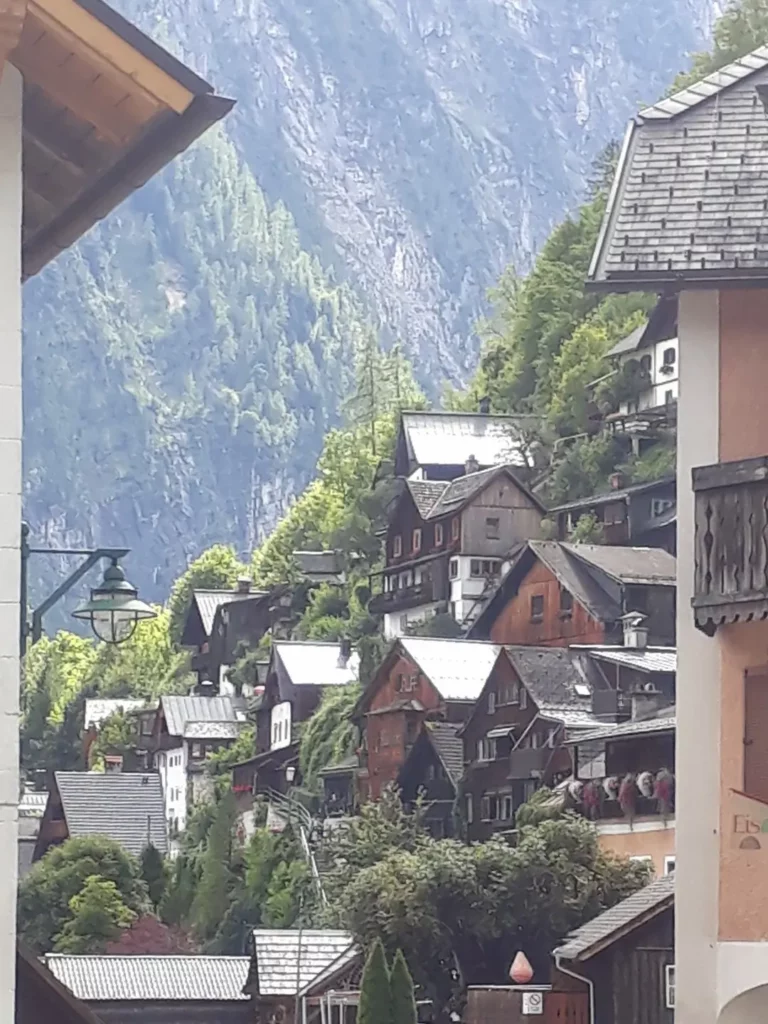
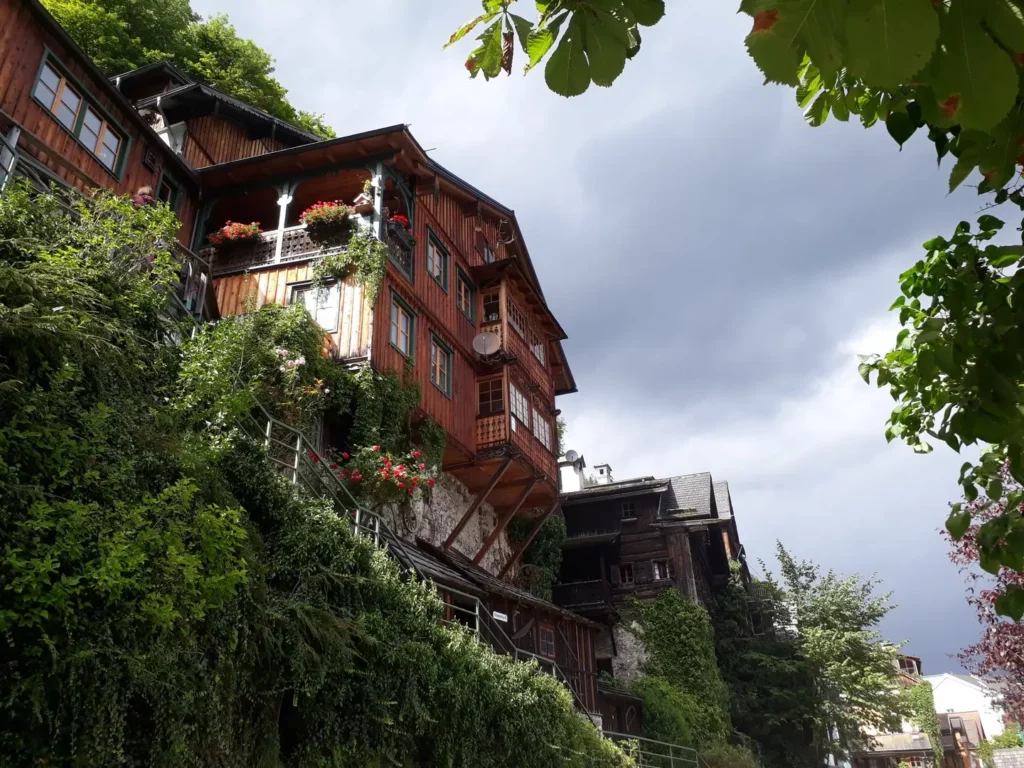
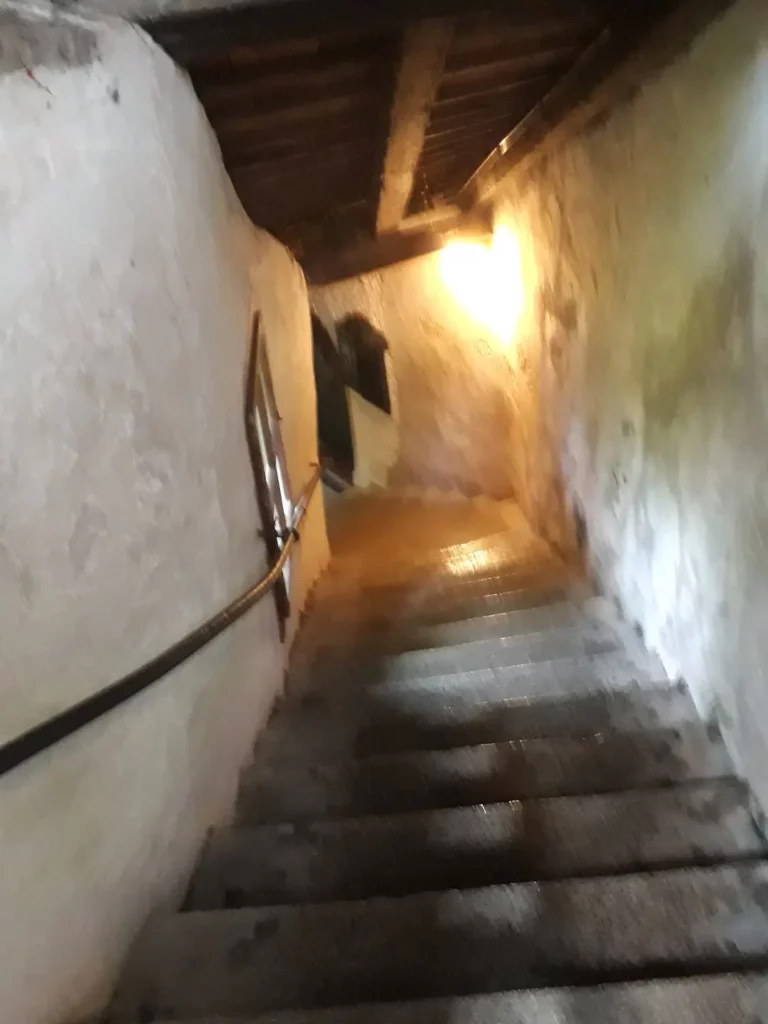
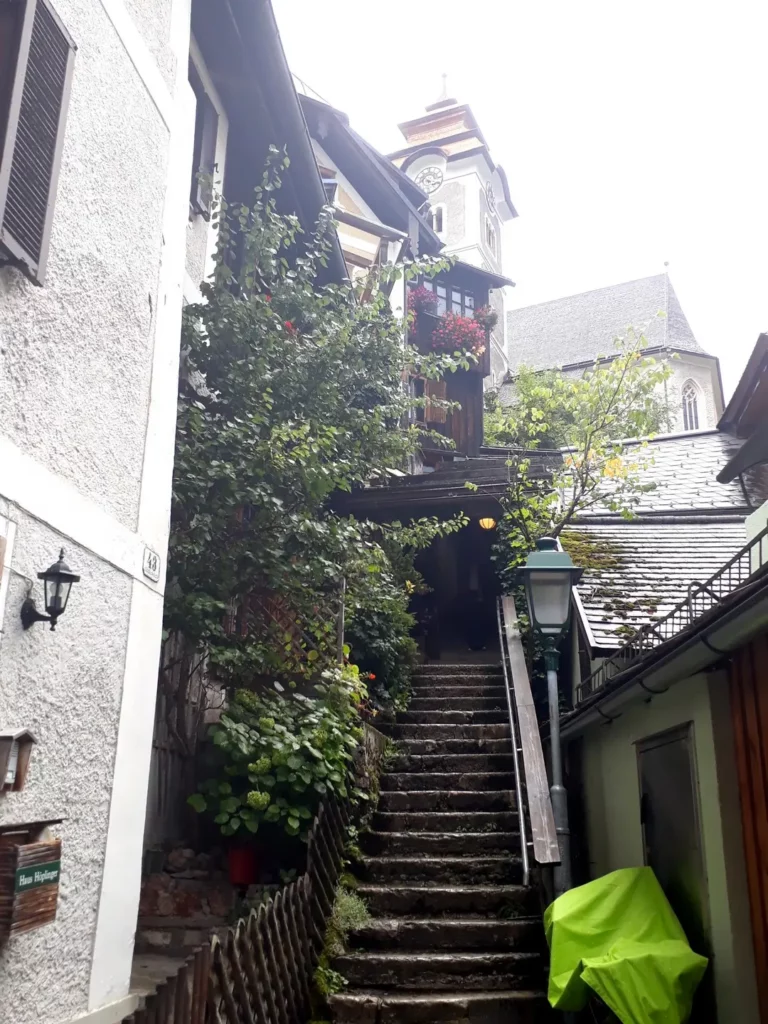
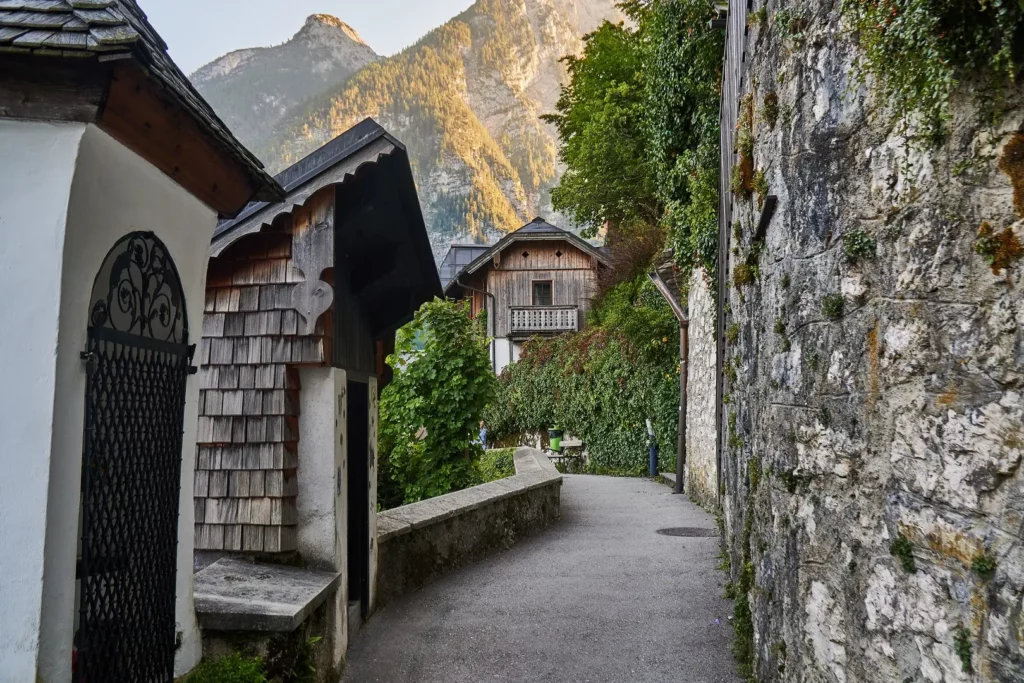
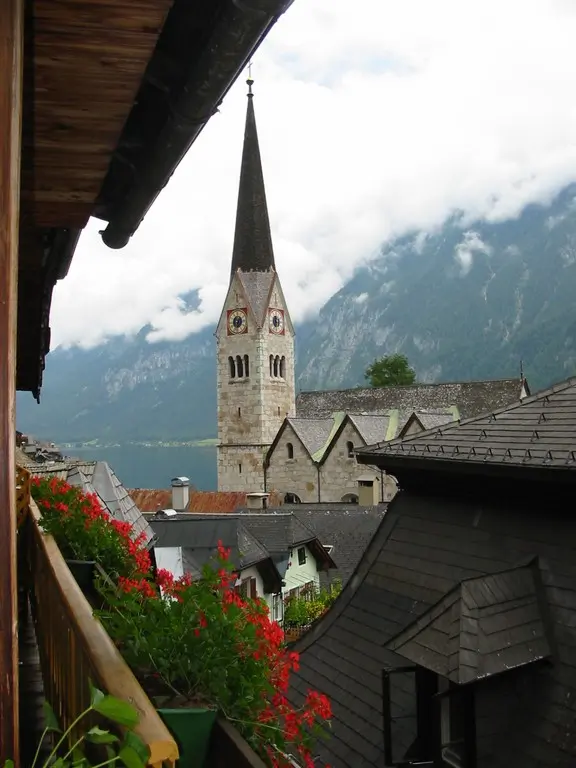
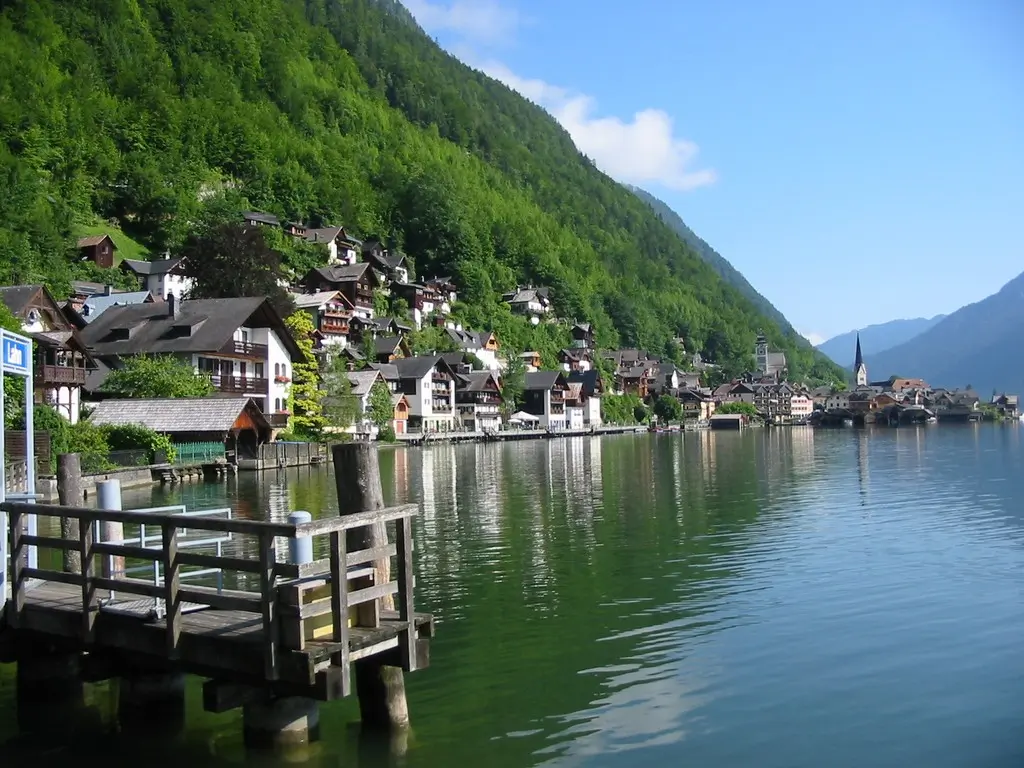
In summer, Hallstatt is best in the evening and morning, when there are no groups of tourists idly hanging about. Groups usually come to the city for a couple of hours: walk around the city and go on an excursion to the salt mines. By 8 pm there are few people.
In May, tourists are attracted by a procession on boats decorated with flowers, on the feast of Corpus Christi. This ceremony has been held continuously since 1628.
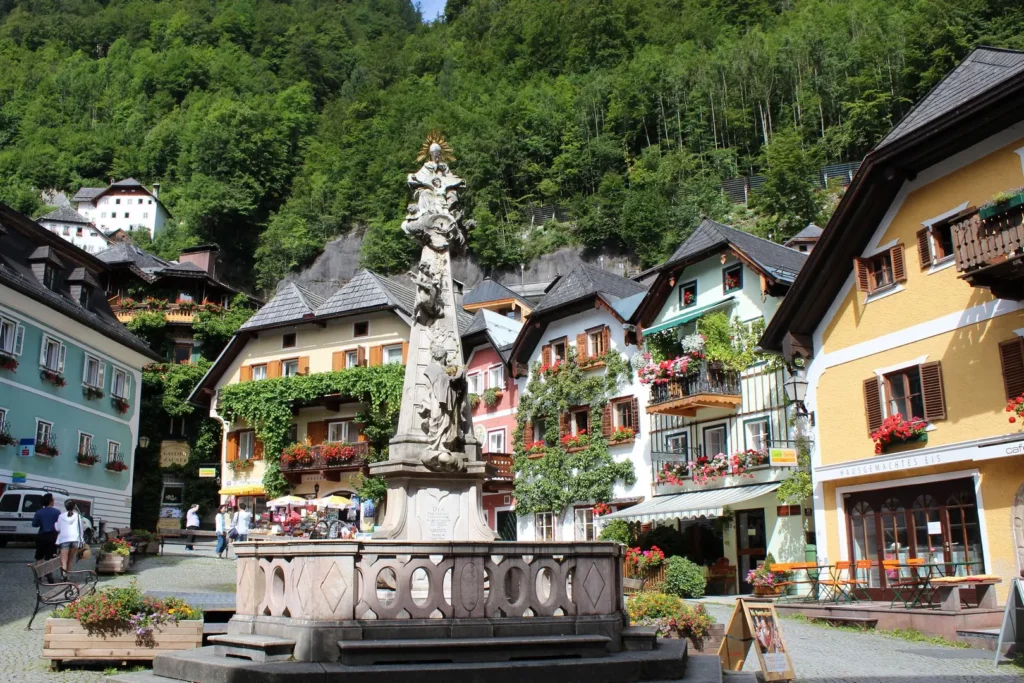

In Hallstatt, you can go on excursions to the salt mines, see the excavations, and look into the museum.
… or go to the mountains. And go on excursions to the Dachstein caves.
…or take a boat trip around the lake. Alternatively – on a boat with an electric motor or on an old-fashioned, gondola-like boats.
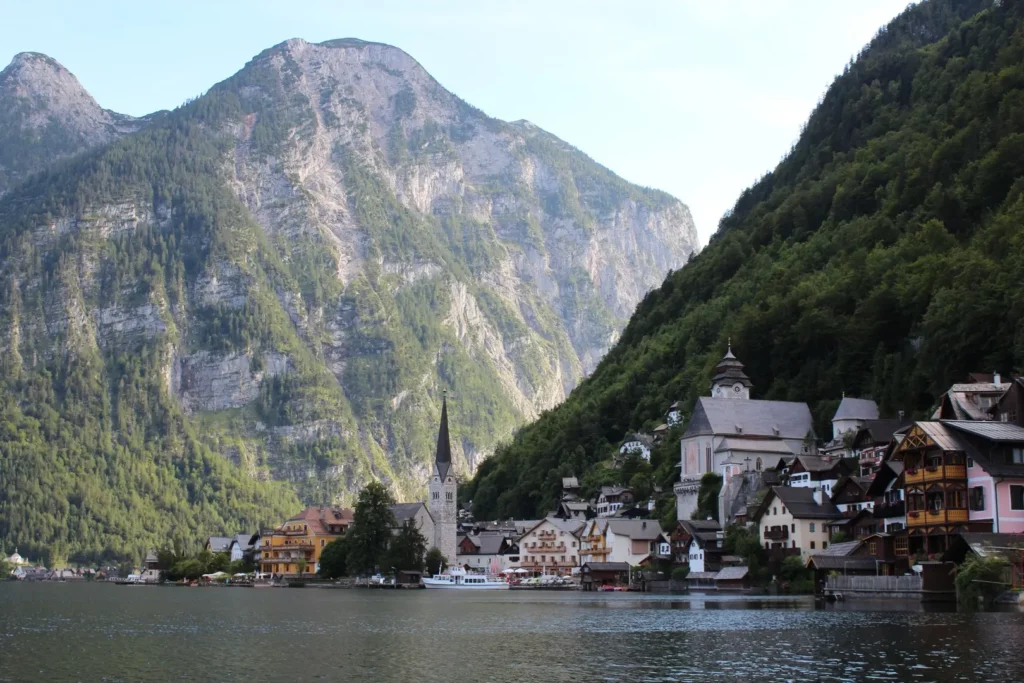
…or go fishing (don’t forget to purchase a license),
… or scuba diving (a license is also required). There is a special hotel for divers. Scuba divers still hope to find gold here, according to legend, hidden by the Nazis in one of the lakes.
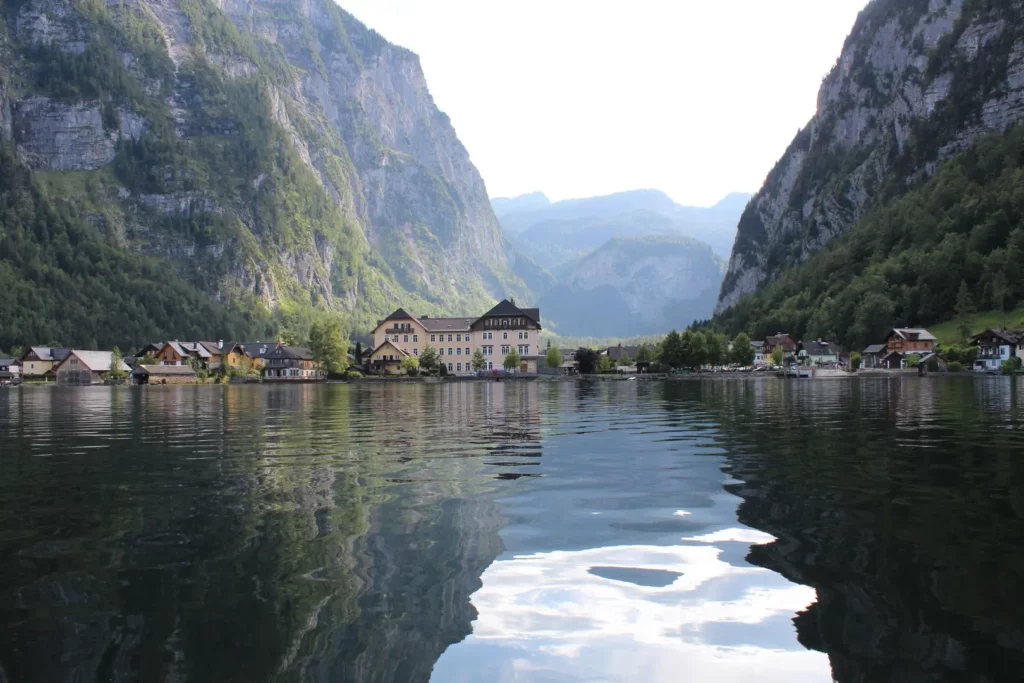
…or just swim. For this, an artificial island was poured almost at the end of the “new” part of the city (Lahn). Here you can sunbathe, there is a descent to the water and a playground for children. Only the water is cold, because the lake is fed by glacial rivers.
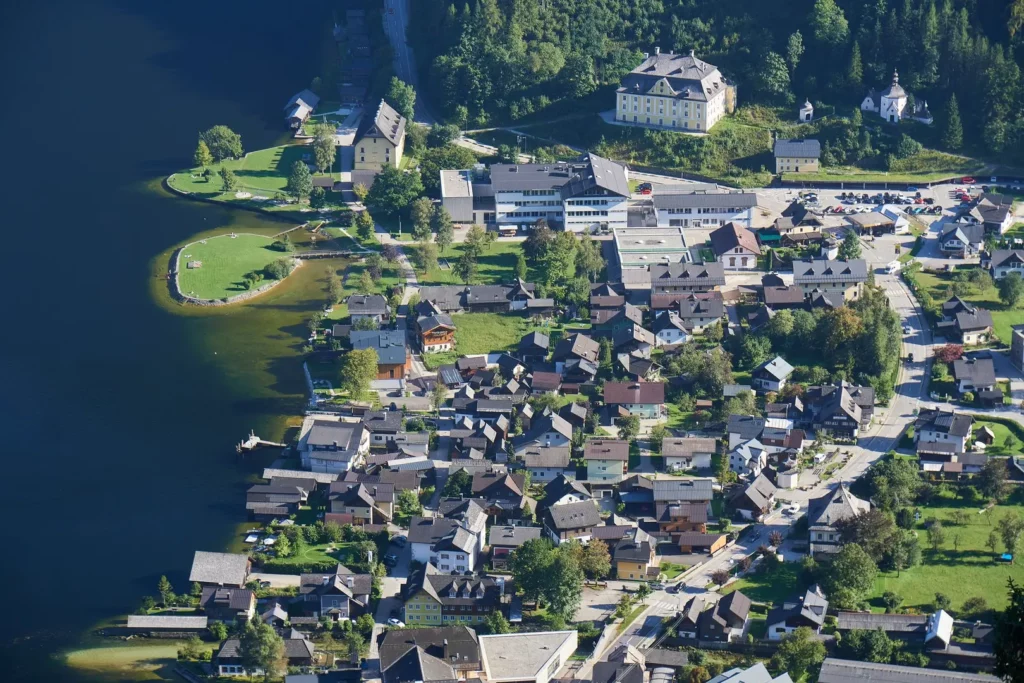
But best of all: 5 minutes from the city center – and you are alone with the lake and mountains.
Lake Hallstatt boat tour
Hallstatt has two piers: one near the city center and one not far from the funicular station. In addition to the ferry that runs between the city and the railway station, there are ships that make trips to other cities on the lake. A circular route towards Obertraun and a circular route to the far northern part of the lake are possible. See the schedule on the website www.hallstattschifffahrt.at.
We took the shorter southern route to Obertraun (50 minutes). The trip gives you the opportunity to see the city and mountains from a different angle, to see the deepest place on the lake at the opposite shore.
We start from the pier in the new part of town, Lahn. The green island in the second photo is for swimming and recreation.
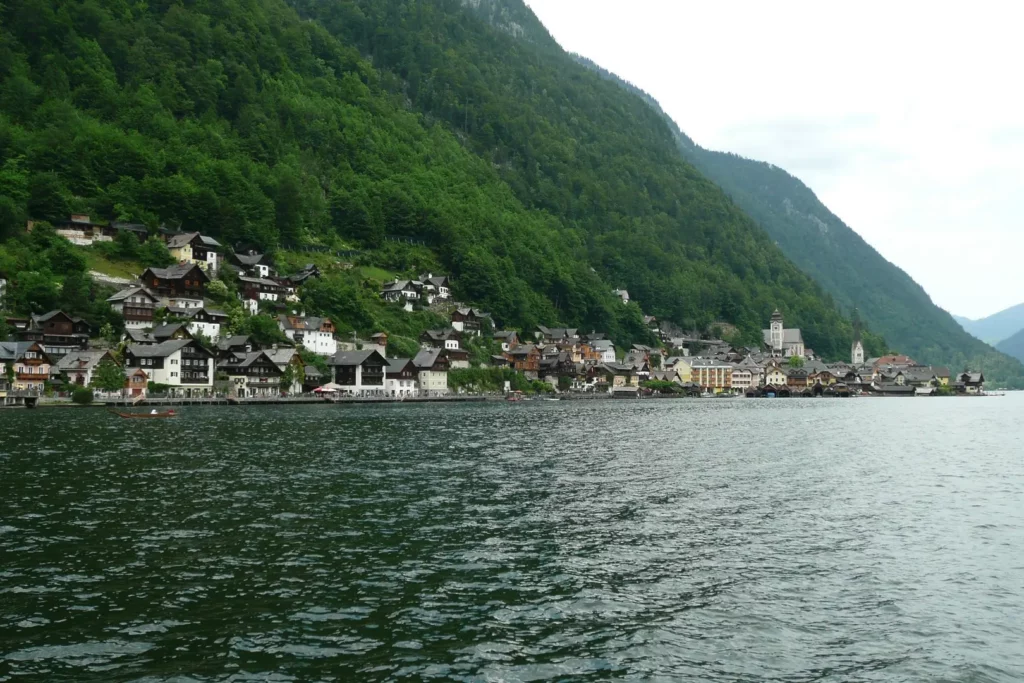
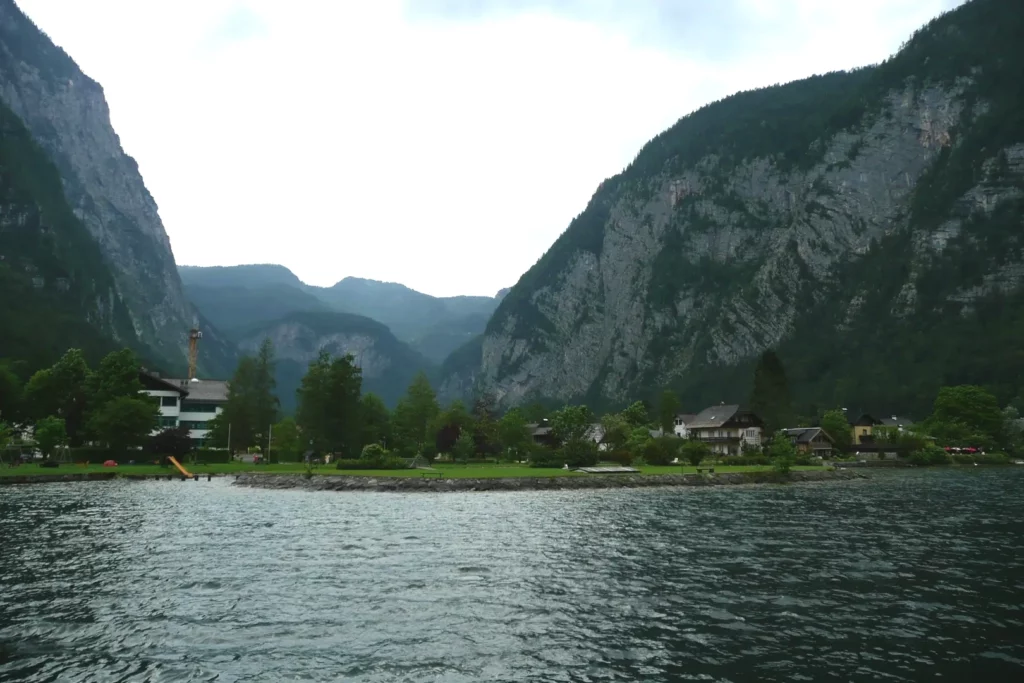
Obertraun looks unpresentable from the water. Few houses go out to the water, the main part of the village is located along the valley.
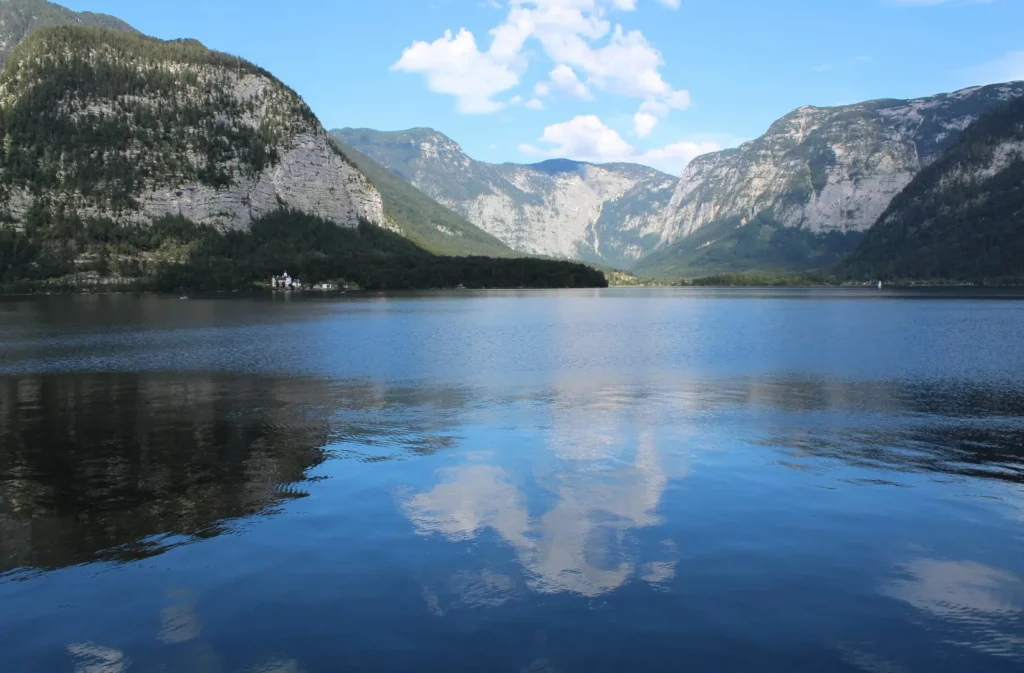
Follow me
On the opposite shore of Hallstatt is the Grub Palace, built in the 16th century and belonged to the noble family of “market judges” of Hallstatt.
At the end of the 19th century the palace became the property of the ambassador and was rebuilt in the neo-romantic style. The palace is now privately owned.
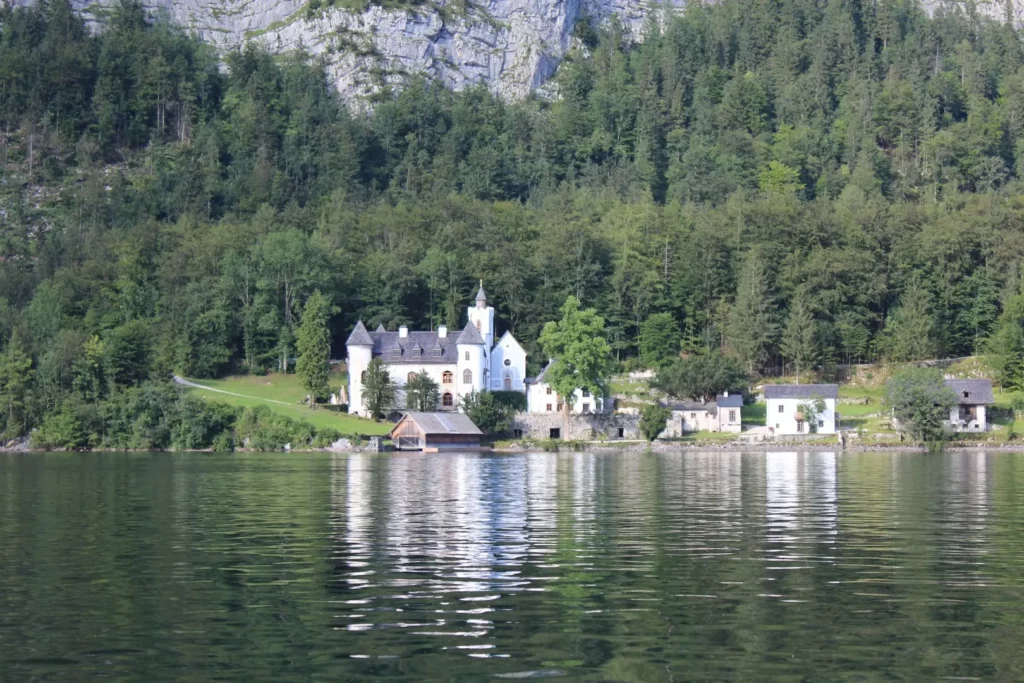
This photo clearly shows the upper station of the funicular. There is now a new observation plattform, which hangs over the town.

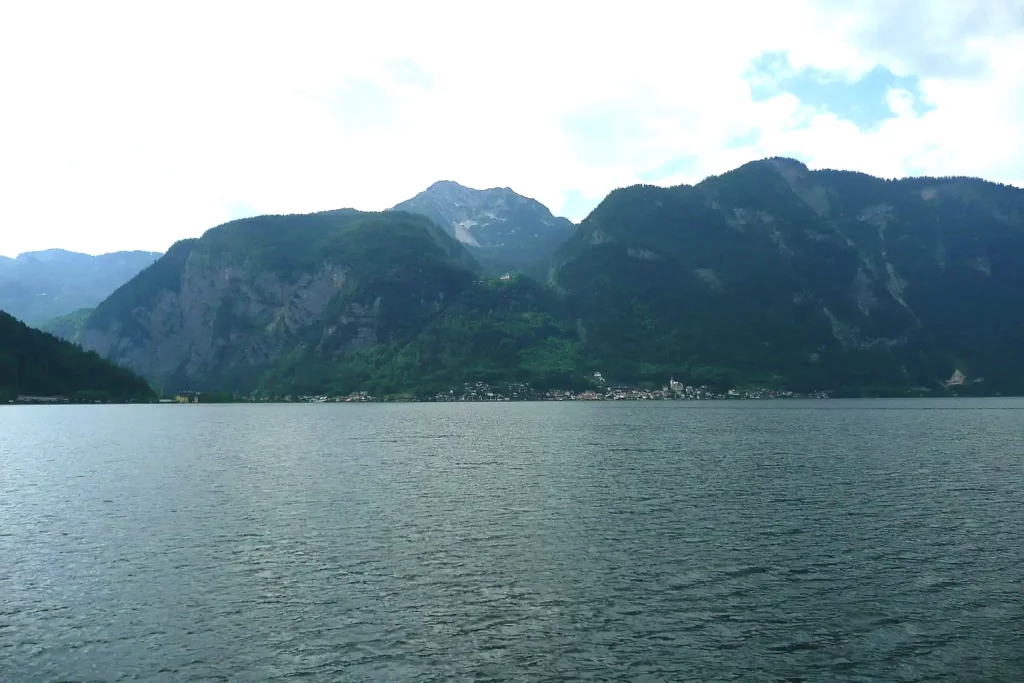
Let’s look at the opposite, northern end of the lake (the picture was taken from Gosau Mühle) and at Hallstatt from the far point of the southern route of the boat and return to the city.
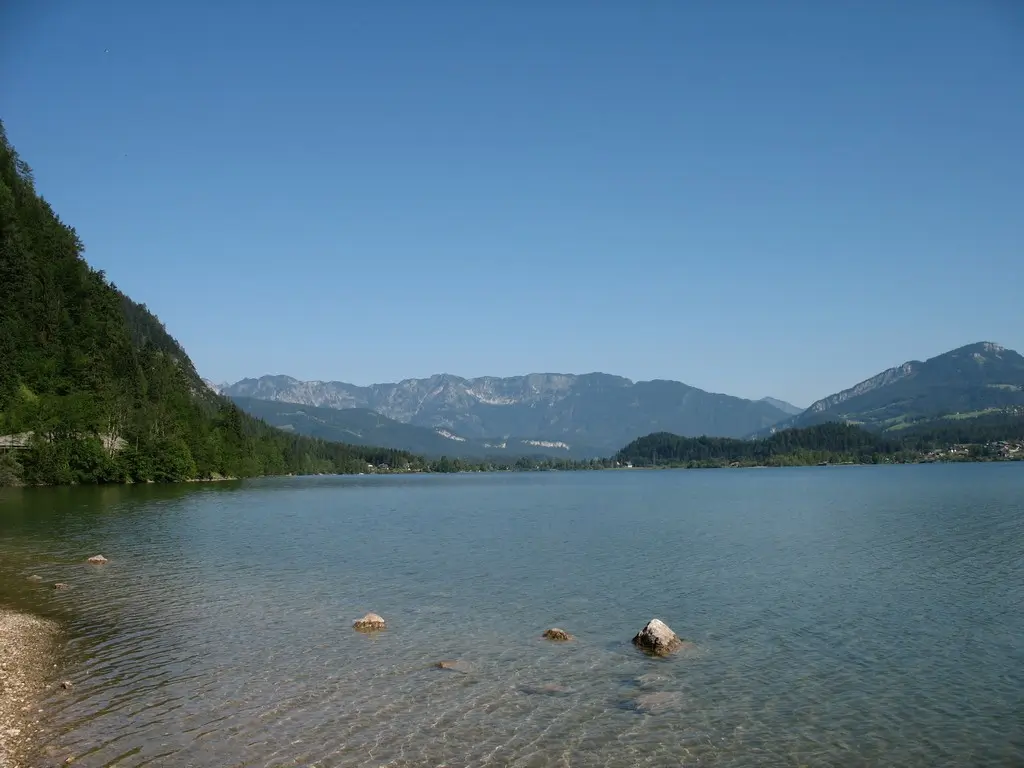
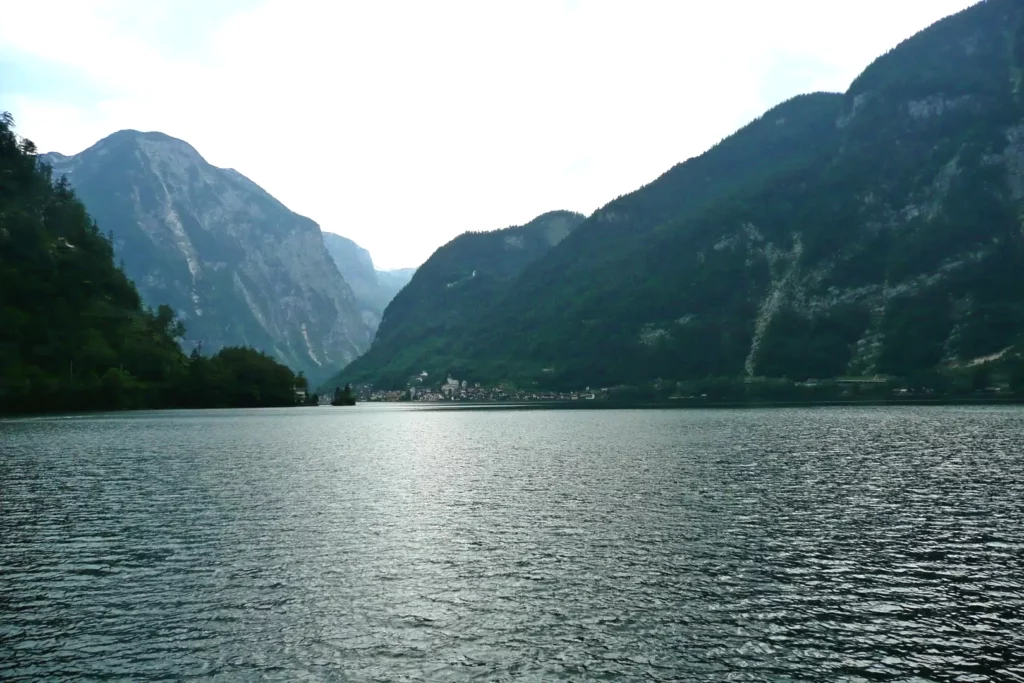
Next – salt mines, museum Hallstatt
Around the lake and Echerntal.
Map of attractions Dachstein, Tennengau, Pongau
Map of attractions Salzkammergut
the neighboring Dachstein plateau and several caves here.
About Lake Gosau – here.
Do you enjoy the site without cookies? This means that I work for you at my own expense.
Perhaps you would like to support my work here.
Or change your cookie settings here. I don’t use personalized ads

